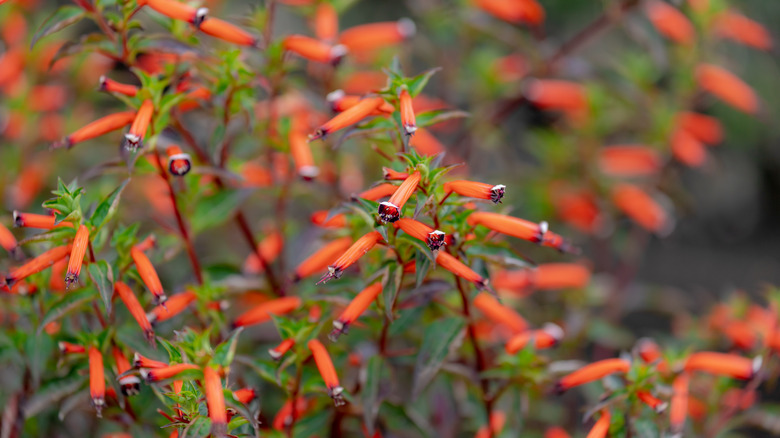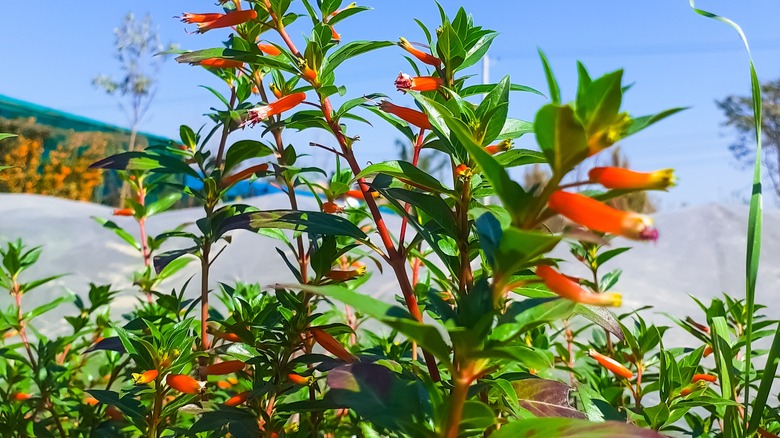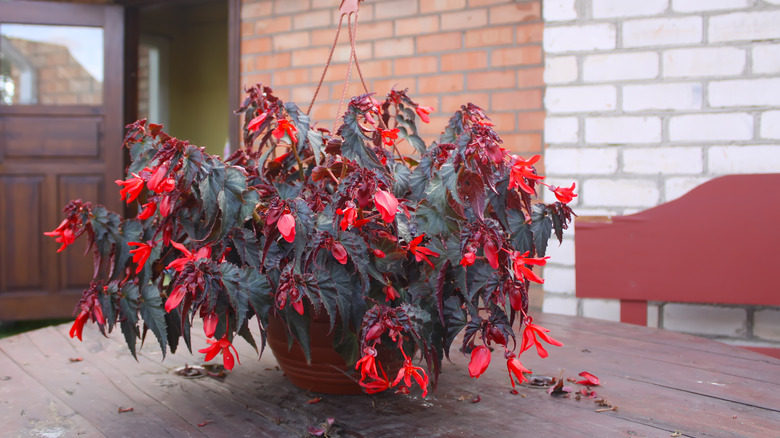Helpful Tips To Grow Cigar Plants And Common Problems To Avoid
Cigar plants are a fun addition to any yard. They have vibrant, tube-shaped blooms that vary from yellow to orange-red. Because of this, they look like lit cigars from afar, hence their name. Thanks to their unique look, they add a dose of interest to your landscaping without much effort. These blooms not only make your backyard seem more playful, but their effects aren't temporary. Unlike other flowers, they grow throughout the summer and early fall, ensuring you have a dose of color for months on end. They also transform your yard into a hummingbird haven, since the small birds are attracted to their tube-like shape.
If you're interested in incorporating this playful addition into your own landscaping design, then you'll be happy to know they're relatively easy to cultivate. All you need is some well-draining soil and a spot in full sun or partial shade. While they might not be finicky, there are still some common problems to be aware of to ensure beautiful blooms all season long. Let's take a deep dive into how to grow cigar plants and common issues to avoid.
How to grow cigar plants
Not only do their blooms come in fun shades, but they're also relatively large flowers. Cigar plants can grow up to 3 feet tall and 5 feet wide, taking up some real estate in your garden. When choosing where to plant them, focus on picking a spot with full sun. This will give you the best results — the shrubs become less leggy, the leaves become a darker shade of green with a reddish tint, and you get more blooms. However, they will still grow in partial shade — they just won't be as vibrant. They do best in Hardiness Zones 10 to 12, which encompasses the southern states and California. Because of this, the flowering plant likes warmer temperatures, thriving between 68 to 100 degrees Fahrenheit.
Cigar plants prefer well-draining soil and like to stay moist for best results. To help the blooms flourish, you can also fertilize bi-monthly during its growing period to make the plant look dense and rich. As for how to plant them, the world is your oyster. They look great as container plants or in hanging baskets, which can be taken inside when the temps drop for over-wintering. They can also be used as background plants, since they're taller in height.
Common problems to avoid
While these are relatively easy plants to grow, there are a few common problems to look out for. First and foremost, the plant has a tendency to become leggy. This means that the stems become thin and long without as many leaves. You can do two things to remedy this situation. The first is to simply hide the issue. You can plant shorter flowers in front of the cigar plant, hiding its legginess with other colorful blossoms. The second is to course-correct the legginess with some pruning. Simply pinch the end of the stem tips a few times during summer to encourage more growth. This means cutting back the stem just above its first node. This causes the plant to sprout out two lateral stems, eventually making the plant bushier and denser. Just make sure not to prune in the summer heat, as the new growth might not survive those intense heat spells.
Another problem is the cigar plant's sensitivity to cold temperatures. While it's a perennial, it often appears as an annual in people's gardens since frost and plummeting temps can kill it. While it can grow back year after year if grown in its appropriate Hardiness Zone, it will die if planted outside of it. Because of this, gardeners outside of Zones 10 to 12 grow cigar plants in containers or hanging baskets, which they can then bring inside. Just make sure to put it in indirect sunlight in your sunniest room for best results.


